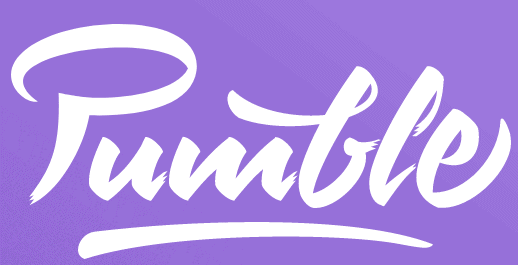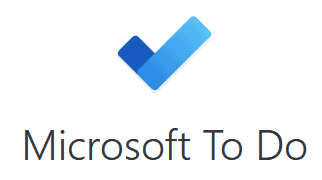Wrike vs Asana Compared in 2025
Wrike vs Asana is a headline attraction. Both of them are powerhouses in the project management world, and each makes a strong case for why it’s the best. In this full breakdown, we’ll compare features and useability and declare the winner.
Key Takeaways: Wrike vs Asana Reviewed
- The main differences between Wrike and Asana are form and function. Asana comes with a much better design and offers smoother navigation.
- Both have solid free plans, but Asana’s is much more generous.
- Little separates the two price-wise, but Wrike is slightly cheaper and could be the better option on a tight budget.
This Wrike vs Asana comparison takes a fresh look at the current versions of each platform. Both are packed with project management tools, and at first glance, little separates the two. Wrike is for those who want a no-nonsense project management software, while Asana appeals to those who enjoy a little flair in their software design. However, there’s more to unpack.
In our Wrike review, we praised the platform for its strong free plan, its array of features and its commitment to keeping your files secure. Our Asana review zones in on the beautiful design of the software, how easy it is to use and the communication and collaboration features. These strengths are the reason both platforms feature in our roundup of the best project management software.
Neither project management tool is without flaws. Where one service drops the ball, the other one picks it up and runs with it. To help you understand which is the overall best project management software, we’ll break each one down and deliver our verdict.
-
01/12/2024 Facts checked
We have updated this article to reflect the latest features offered by each platform.
- 1$10 / month(All Plans)
- 2
Cloudwards Editor’s Choice
If we had to choose one platform, it would be Asana. The design of the user interface is far superior to Wrike’s, which is awful. It’s more user-friendly with smoother navigation. Asana also has superior training tools for those who need a little guidance.
Avoid Costly Project Management Mistakes – Get Free Tips Today!

- Discover 10 fundamentals of project management
- Understand step-by-step plans for PM execution
- Learn tips to avoid 5 common mistakes by beginners
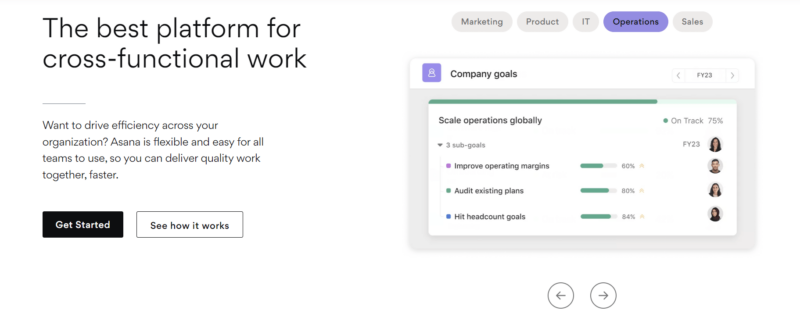
Asana falls short in terms of pricing structure, and many useful features are locked behind paywalls. This shouldn’t be a deal breaker for most, and if you have the budget, Asana is the right choice for your project and task management needs.
Asana vs Wrike: Comparison at a Glance
| Features | ||
|---|---|---|
| $10 / month(All Plans) | $10.99 / month(All Plans) | |
| Review | Review | |
| Kanban board | ||
| List | ||
| Calendar | ||
| Timeline | ||
| Spreadsheet view | ||
| Gantt charts | ||
| Workload planning | ||
| Long-term planning | ||
| Multiple project management | ||
| Dependency management | ||
| Native scrum management | ||
| Set user permissions | ||
| File storage | ||
| Time-tracking | ||
| Built-in integrations | ||
| Reporting features | ||
| Free plan | ||
| Free Trial | 14 days | 30 days |
| Web app | ||
| Windows | ||
| MacOS | ||
| Android | ||
| iOS | ||
| AI Tools | ||
| Ticket-based support | ||
| Tutorials | ||
| Knowledgebase | ||
| Forum | ||
| Live chat | ||
| Phone support |
Which Is Better: Wrike vs Asana?
We believe Asana is the better choice for individual use, small teams and larger organizations. There’s nothing Wrike can do that Asana can’t. Despite both offering great free project management software, Asana is better as it lets you do much more, including creating unlimited projects.
Asana also has a dedicated inbox where you can interact with other users by sending instant messages. You can create groups, develop tasks within a conversation and record and send video messages to clearly explain complex ideas.
We also appreciate Asana’s commitment to helping customers use its product. There is a wealth of tutorials available — far more than what Wrike offers. In addition, Asana Academy aims to help users become experts on the software, which is especially useful for anyone who wants to train new users added to an organization.
What Is Wrike?
Founded in 2006, Wrike is project management software that helps organizations work on short- and long-term projects. With its multi-language support options, the company has built a global platform. At present, Wrike has amassed more than 2.3 million users.

Users can use the platform for basic task management or to work on more complex projects. It’s a great space for project portfolio management too, as users can focus on multiple projects simultaneously.
What Is Asana?
Asana was built as a project management platform to help organizations spend less time in meetings and more time doing focused work. The platform includes chat tools to help communicate, collaboration tools for teams working remotely, and task management tools to help users manage their workload.
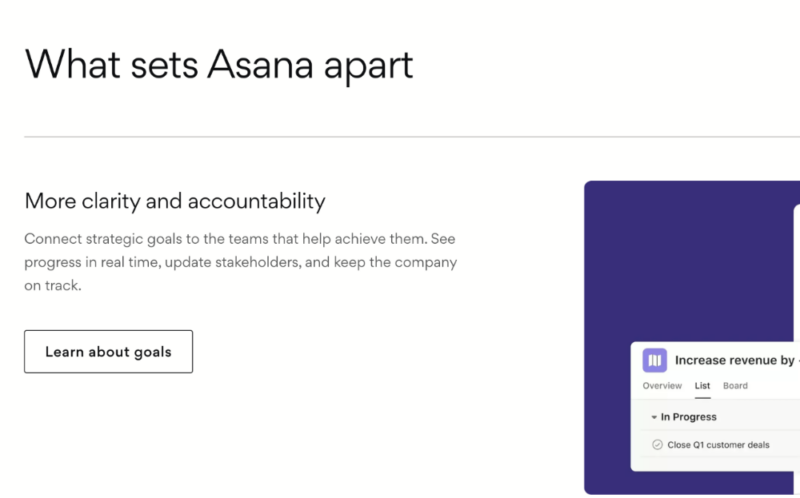
At the time of writing, Asana was being used by more than 100,000 organizations, proving that it’s one of the most popular project management tools around.
Advantages of Wrike: We Recommend Wrike if You Want…
- Integrations: Wrike has more than 400 integrations to choose from, making it one of the most expansive platforms.
- A cheaper option: Wrike’s base-level plan is slightly cheaper than Asana’s and could lead to bigger savings if you have a high number of users.
- Security: Wrike has top-notch security to protect your data.
Advantages of Asana: We Recommend Asana if You Want…
- Superior design: Asana has a beautiful user interface that is sure to inspire you.
- A better free plan: Asana has the most generous free plan on the market.
- Communication tools: Asana’s dedicated inbox makes it easy to communicate privately with team members and separate your teams into different group chats.
If You Want to Consider Other Services, Check Out…
If you would like an alternative to Asana and Wrike, then we recommend ClickUp and monday.com. Both come with better design and usability than Wrike and offer better value than Asana.
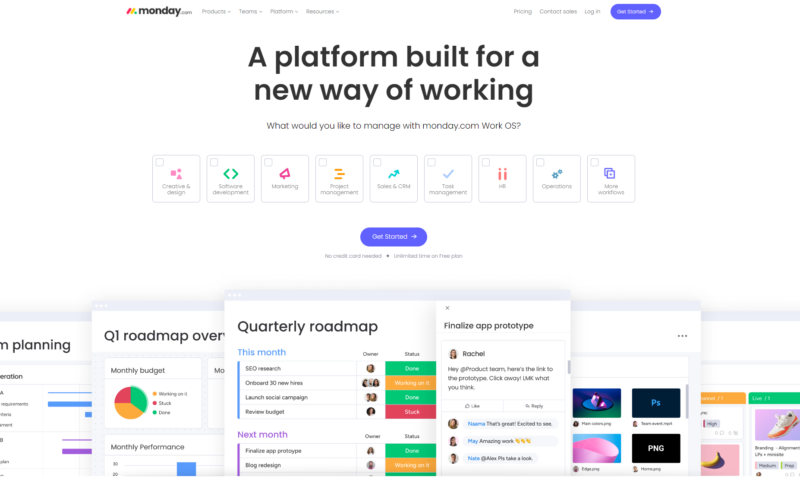
We put them head to head to help you choose, which you can read about in our ClickUp vs monday.com comparison.
- 1
- 2
- 3
- 4
- 5
- 6
- 7
- 8$59 / month(All Plans)
- 9
- 10
- 11
- 12
- 13$3 / month(All Plans)
- 14$7.25 / month(All Plans)
- 15$4 / month(All Plans)
- 16$1 / month(All Plans)
- 17
- 18
- 19
- 20
- 21
- 22
- 23
- 24$10 / month(All Plans)
- 25
- 26
- 27
- 28
- 29
- 30
- 31
- 32
- 33
- 34
- 35
- 36
- 37
- 38$2.08 / month(All Plans)
- 39
- 40
- 41
- 42$15 / month(All Plans)
- 43
- 44
- 45
- 46$20 / month(All Plans)
- 47
- 48
- 49$910 / month(All Plans)
- 50
- 51
- 52
- 53
- 54$15 / month(All Plans)
- 55
- 56
Wrike vs Asana: Similarities
We’ll get to the heart of this comparison by looking closely at the similarities between Wrike and Asana. We’ll also comment on which service implements shared features the best to give you a better idea of which to choose. Here’s a short overview of the most important similarities between Wrike and Asana:
- Project management tools — A global view on both platforms lets you see all your projects on one page.
- Task management tools — Kanban boards, Gantt charts and more are available.
- File sharing — Quickly add files to task cards on both platforms.
- Time tracking — Stop and start the tracker when you begin and finish a task.
- Automations — You can automate notifications, emails and tasks.
- Pricing — Both are priced higher than most and both have a poor pricing structure.
- Artificial intelligence — You ask AI to craft blog posts, summarize meeting notes and a lot more.
- Security — Both are accredited for their security measures so be confident your data is safe.
Project Management Tools
A useful feature for project managers is having a global view of all the projects they’re working on. Both Asana and Wrike offer this feature, allowing you to track projects without having to jump into each one individually.
You can also see an overview of everyone’s workload across all projects, which can help you manage and implement successful global capacity planning for all team members.
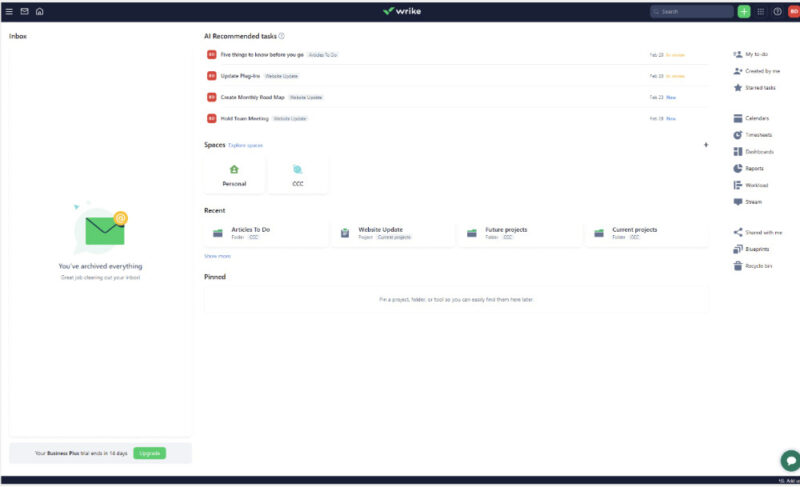
Task Management Tools
The tools for task management are pretty similar. The usual suspects are available, such as kanban boards, Gantt charts and a calendar. Wrike offers a table view as one of its default views. Asana doesn’t, but you can create a table view with one of the custom project templates.
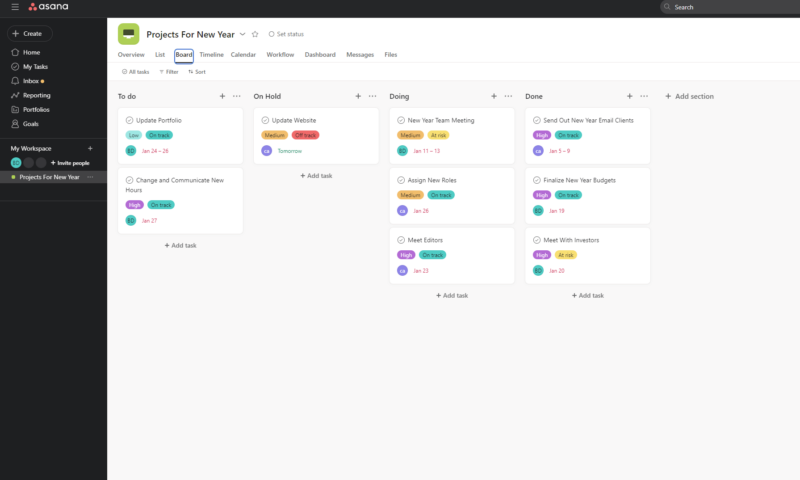
Regarding managing tasks, you can assign tasks to other users, add due dates and include task priorities. All project views work well on each platform — we just prefer the design of each tool on Asana. We should also note that the types of tools you can access depend on the plan you’re on, which is true for both platforms.
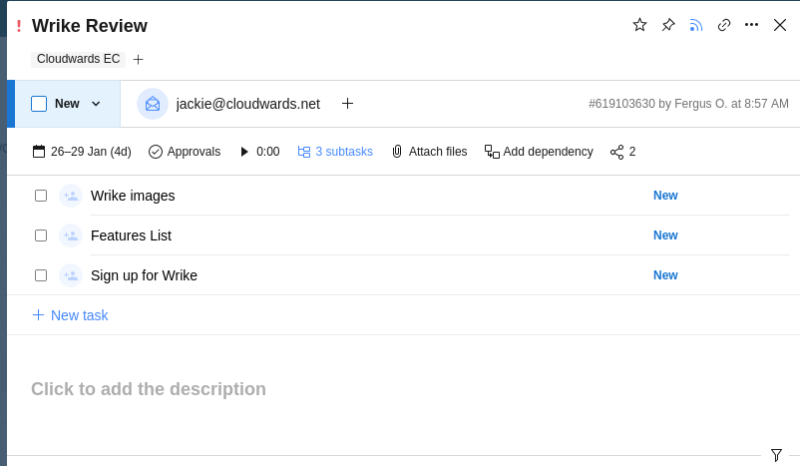
File Sharing
Though neither platform can serve you as well as the best cloud storage services, you at least have the option to share files between members. You can add files to task cards and projects on both services. Asana provides users with unlimited storage space, whereas Wrike tops out at 10GB.
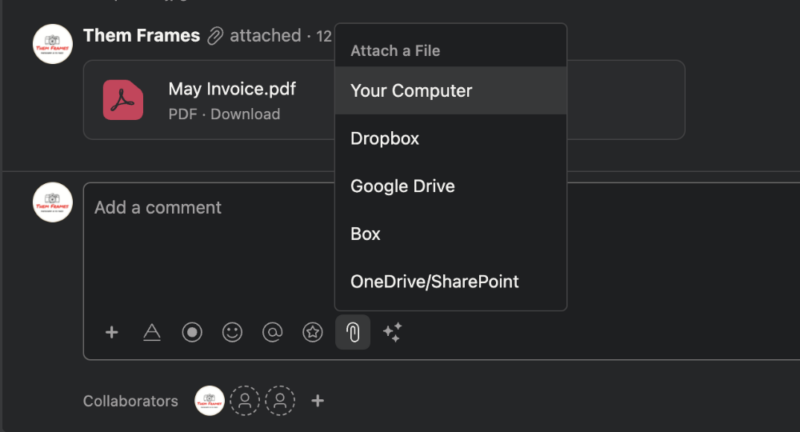
Time Tracking
Asana and Wrike both provide a built-in time tracker for accurate time tracking. It’s a simple tool. You just start the timer when you begin a task and stop it once the work is complete. Sadly, Wrike doesn’t offer this tool on the free plan. You can get a free time tracker on Asana through the integrations. If you want free time tracking, we recommend checking out our Clockify review.
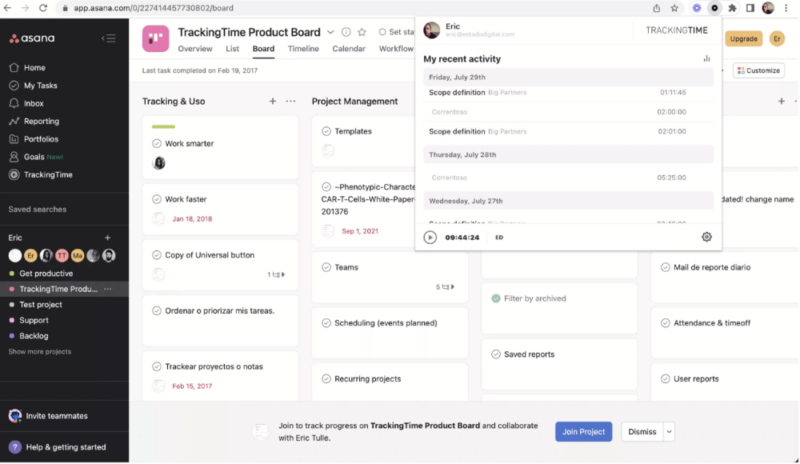
through the native time trackers on each platform.
You can also manually add time-tracking information and estimates. Once you stop the time tracker, the time taken to do the work is automatically saved to the task card.
Automations
If you’re big on process-driven project management, then having access to automations will certainly help your workflow. The platforms have a similar approach when it comes to automations, allowing project managers to create “rules” for specific actions and tasks.
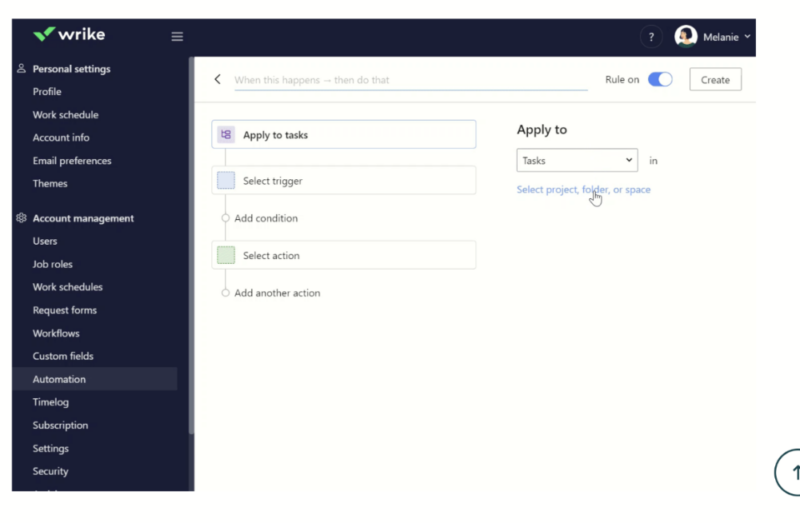
and avoid wasting time on menial tasks.
These rules include notifying specific users when a task is changed or completed, sending reminders, reassigning tasks to other users and much more. Naturally, each platform has its own way of doing things, but the functionality is essentially the same.
Pricing
Asana and Wrike share pricing similarities but unfortunately for the wrong reasons. The entry-level plan on each service is priced slightly higher than other services, and the price jump between plans is high.
You’ll pay $10 per user per month on annual billing for Wrike and $10.99 per user per month for Asana. The next plan is more than double that amount on both Wrike and Asana, with neither service offering a good middle ground. If you need to keep costs low, check out our selection of the best cheap project management software.
Artificial Intelligence (AI)
Love it or loathe it, AI is here to stay. Asana and Wrike have recently added similar AI functionality to their platforms, mainly related to copy. You can write prompts for meeting notes, briefings and project outlines, and the AI crafts the copy for you.
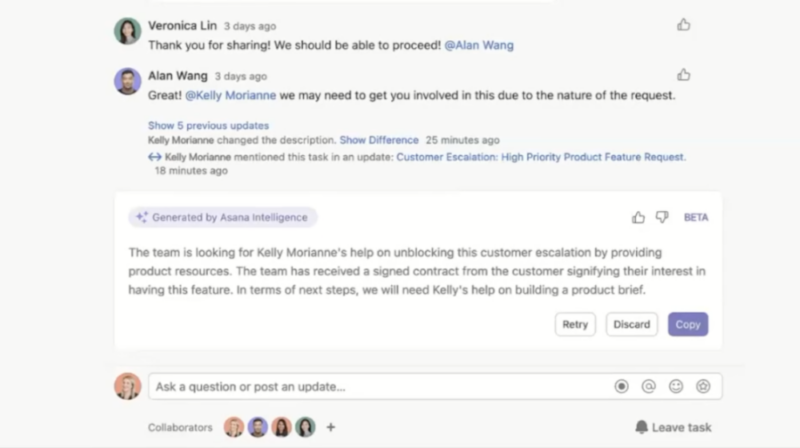
Security
Wrike and Asana have standard security measures in place. They both use the TLS protocol and encrypt data with AES-256. If someone does steal any data, it will be extremely difficult for them to view it. Both platforms have received SOC 2 Type 2 certification, which means that their security measures have been assessed and deemed satisfactory by a governing body.
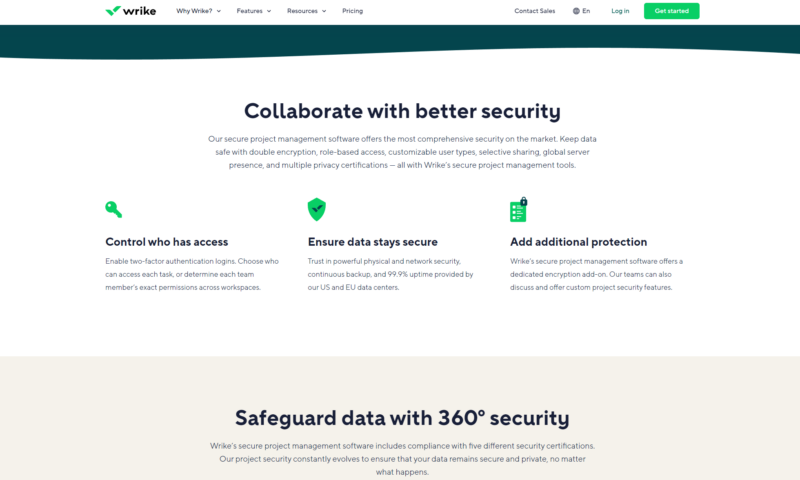
Asana vs Wrike: Differences
Let’s take a look at the key differences between each platform. Here’s a quick overview:
- User interface — Asana has the far better design out of the two.
- Chat tools — Asana’s dedicated inbox lets you communicate with others.
- Free plan — Both are good, but Asana has the more generous free plan.
- Integrations — Neither skimp on integrations, but Wrike has three times more options than Asana.
- Privacy — Wrike shares your data with other companies, thankfully Asana doesn’t.
- Reports — Asana’s reports are visually better, making it easier to digest data.
User Interface
Perhaps the biggest difference between the two is the design. Wrike will put you to sleep, whereas Asana will keep you alert and inspired to work on projects. Our assessment of Wrike may be a little harsh, but the truth is that the user interface is plain and dull.
Asana is vibrant and comes with fonts that are easy on the eye, which makes tracking project progress more enjoyable.
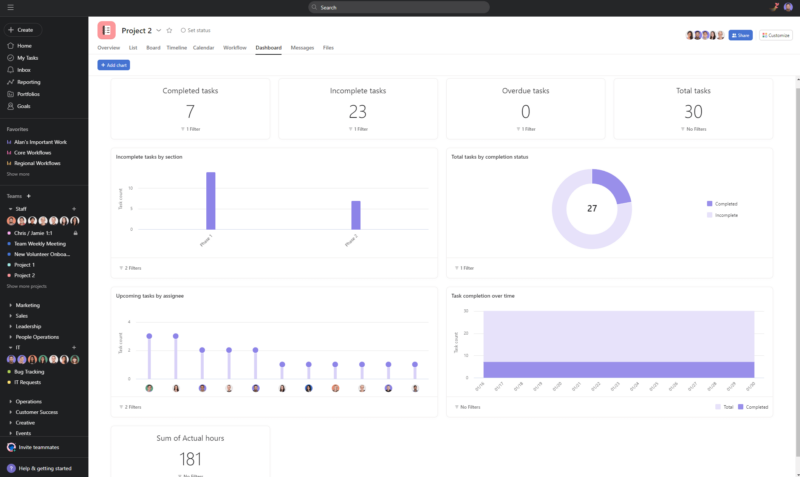
Chat Tools
Though both platforms let you interact with other team members via task cards, Asana goes a step further and offers a dedicated chat box. Think of it like Slack: It’s a space to create groups, send private messages and share files and updates between teams. You can also create follow-up tasks within the chat tool and assign them to other users.
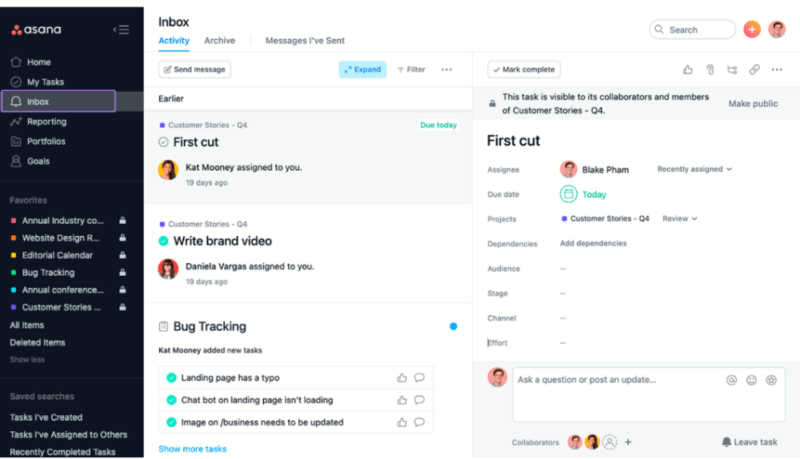
Free Plan
Wrike and Asana have strong free plans, which is why they’re both included in our selection of the best free project management software. However, Asana knocks most free services out of the park, including Wrike.
Asana lets you create unlimited projects, which is ideal for those with large project portfolios. You can also access unlimited storage space, create unlimited tasks, add unlimited comments to cards and send unlimited messages.
Integrations
Asana and Wrike have plenty of integrations for you to work with. However, though Asana has more than 100 third-party integrations, it doesn’t come close to Wrike, which has more than 400.
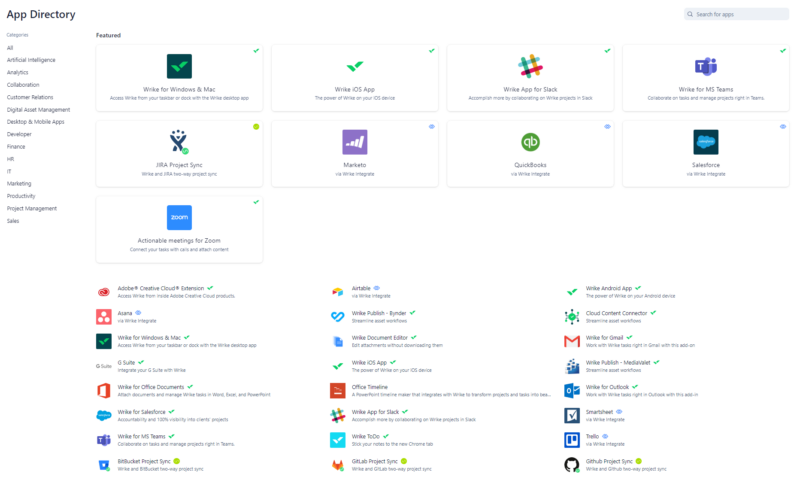
They cover similar bases: accounting, marketing, sales, productivity and more. The difference is the extent to which Wrike goes, allowing you to create a system that best serves your business needs.
Privacy
In our Wrike review, we mentioned that the company’s privacy policy was one of the shadiest we’d ever seen. That’s because your personal information, including your social media data, is recorded and shared with third-party companies. Asana only uses your data for its own purposes, making it the clear winner by default in this category.

Reports
Users can pull a string of reports to check on team productivity and the overall health of a project. Wrike’s reporting features are very black and white, and although diverse, don’t feel as compelling and intuitive as Asana’s.
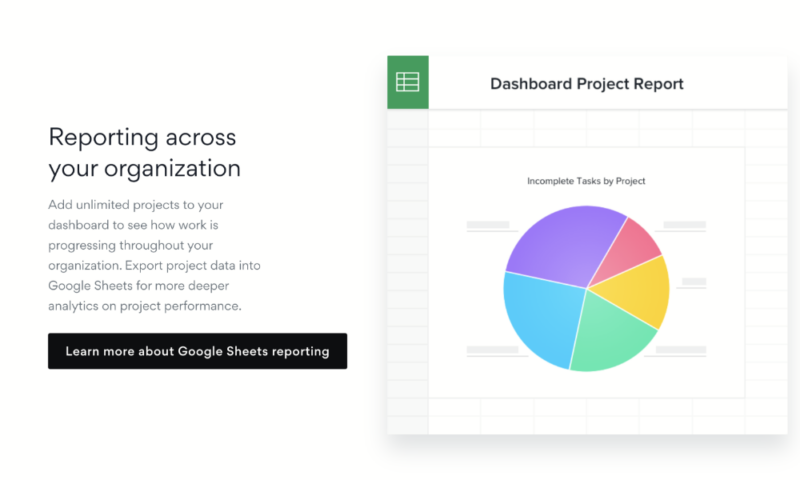
Our Comparison Guidelines
Here at Cloudwards, we use and review every product that we compare. Our team of project management experts knows what makes a good product, so we can single out specific features to help users make the most informed decisions.
Project management features tend to take center stage. After all, these are the tools you’ll use each day when managing your workload. However, we also understand the importance of security, usability and customer support, and that’s why we include these categories when creating our comparison guides.
The Verdict: Why We Think Asana Wins Overall
This was always going to be a close battle. Each service offers a top-quality platform to help you track progress, work on multiple projects and ensure that all your tasks are complete. Of course, there can only be one winner, and for us, it’s Asana.
Its communication tools, smooth-flowing user interface and strategic planning features make it one of the best all-in-one platforms currently on the market. Wrike isn’t far behind, but in this race to the top, Asana is the first to cross the finish line.
Did you enjoy this comparison guide? Which other project management tools would you like us to compare? Which project management tool is your favorite: Wrike or Asana? Let us know in the comments. Thanks for reading.
FAQ: Asana vs Wrike Comparison
Very little separates the two regarding project management features. They’re both built for managing basic and complex projects and have all the necessary tools, including kanban boards, Gantt charts, table views and a range of project templates.
The pricing is similar, but Wrike is slightly cheaper. For small teams, other project management tools are cheaper than both Wrike and Asana, like monday.com and ClickUp.
Yes. Each service comes stacked with a ton of integration options. Wrike has more than 400 and Asana has more than 100 integrations available. They include popular services such as Slack, Google Workspace, Microsoft Teams and many more.












